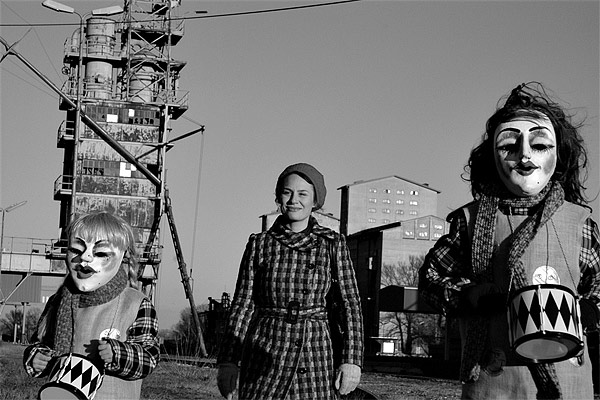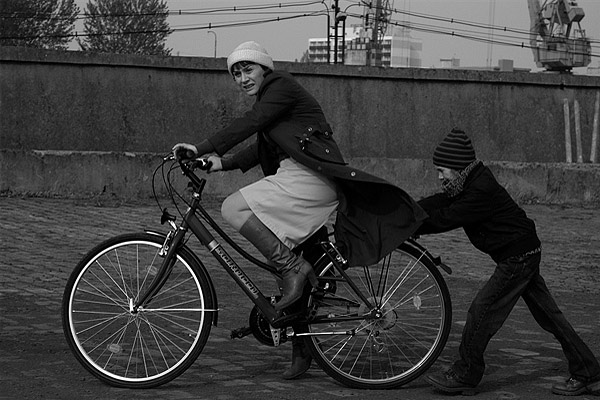A woman walks along the rail tracks, together with two grotesque masked figures; soon they are surrounded by a Carnival parade. The woman is Mrs. Blumenthal, who lives with her family in Vienna’s suburban dock area. She is a manic-depressive person, totally unpredictable and unable to relate with others; her mood swings and her paranoia keep her from leaving the neighborhood and making serious attempts at any activity. Her husband is Mr. Blumenthal, an insubstantial little man with many neurotic traits. Roman, the oldest son, is a very reserved fellow. He is so quiet that we rarely notice him at all: sometimes it feels like he is not even there. Pius, the youngest of the children, is probably the sanest in the family. His worst problem is adults, especially his Religion teacher, a sadistic man that enjoys punishing his students while enlightening them with the word of Jesus Christ (trivia time: Follow Me is the textbook he uses during his classes).


As soon as the first images of Mrs. Blumenthal in a checkered coat and her two masked sons appear on screen, we are aware that Folge Mir (Follow Me in English) is not the usual indie film for the mass of delusional filmgoers looking for something just a little out of the ordinary. Johannes Hammel creates a compelling piece of cinematography with a remarkable Nouvelle Vague-ish appeal and many cinephile references all over the place. Folge Mir is not an easy watch for just anybody — I witnessed many of my fellow spectators walk out during the screening or neglect the film for a good five minutes to go get a popcorn refill — but if you can endure the lack of a storyline, you will be fully rewarded, first of all by the film’s technical qualities, like the gorgeous black and white, the perfect framing and the ingenious editing. The visual beauty of Folge Mir was so striking that I could barely blink.
The opening Carnival sequence is exemplary to understand the film’s modus operandi in establishing a relation between characters and audience. From the very start, we are presented with inexplicably beautiful and, to an extent, extremely unsettling material. The unsettling element resides not in the actual content of the opening scene, but in how we realize that we are witnessing something that transcends the standard laws of storytelling. Folge Mir completely defies the notion of timeline: as events are not in the least in their chronological order, emotions and states of mind are likewise depicted as extremely fragmented and ambiguous. To destabilize the viewer’s perceptions, Mrs. Blumenthal is portrayed by different actresses (Daniela Holtz and Charlotte Ullrich), and the main characters are overall adumbrated as elusive and multifaceted.
Watching Folge Mir is like watching the dream of a family slowly unravel under your very own eyes. Perhaps I should rather say the dream of an un-family, as the Blumenthals are far from a functional family unit. Johannes Hammel puts in our hands the end of the thread, but the material is so intricate and dense with symbols that trying to figure out a linear story behind what we see is futile. The film is more than a simple montage of several episodes from the life of the Blumenthals; it is instead a collage of separate and sometimes contrasting states of mind and emotional rifts shifting shape and drifting away the one from the other, as opposed to the general and stereotyped idea of a family — sarcastically shown in the Super 8 sections that are intertwined with the black and white footage.
Folge Mir is in competition at RIFF 2011 in the New Visions category.
Contemporary Austrian movies are very far from being comfortable and easy cinematographical experiences.Austrian directors are always trying to destroy the security and mental comfort of the spectator: I think in directors like Michael Haneke, Ulrich Seidl, Jessica Hausner and Ruth Mader:their portrait of Austria is not the portrait of the “Felix Austria” in the films of Sissi.Maybe is the shadow and the continued presence of writers like Thomas Bernhard ,Peter Handke or Elfriede Jelinek…
Thanks again for the post. Great.